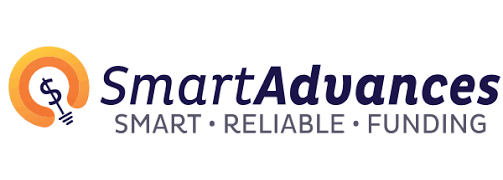- Avoid delinquency or default on loans
- Can pause payments during financial hardship
- Protects your credit score
What is Forbearance and How Does It Work?

Our evaluations and opinions are not influenced by our advertising relationships, but we may earn a commission from our partners’ links. This content is created by TIME Stamped, under TIME’s direction and produced in accordance with TIME’s editorial guidelines and overseen by TIME’s editorial staff. Learn more about it.
If you’re struggling to keep up with your loan, you might be able to hit pause on your payments for up to a year (or more)—without any penalties or hurting your credit score. Forbearance on a loan allows you to stop making payments without becoming delinquent or going into default. This can protect your finances while saving your lender money by avoiding the default process altogether.
Forbearance allows borrowers experiencing financial hardship a temporary pause of loan payments. It’s common for mortgages and student loans, but may be applied to any loan type—depending on lender allowances.
Forbearance lets you stop required loan payments and can protect you from going into default on your loans. Interest will still accrue—but your loans won’t become delinquent and you’ll avoid penalties for going into default.
You must apply for forbearance—and approval is at the discretion of the lender or loan servicer. In a few circumstances, the government mandates forbearance approval for certain borrowers—such as the COVID-19 payment and interest pause for student loans that started in March 2020 and ended in September 2023. Most types of forbearance require the borrower to submit evidence of financial hardship.
 |  |  | |
|---|---|---|---|
| APR | 8.99% - 29.49% | 5.99% to 35.99% | 9.95% - 35.99% |
| Term | 2 to 7 years | 2 to 72 months | 12 to 60 months |
| Loan amount | $5,000 - $100,000 | $100 to $20,000 | $2,000 - $35,000 |
| Min. credit score | 680 | N/A | 600 or higher for the best chance of approval |
| View Offer | View Offer | View Offer |
As mentioned, interest still accrues while your loans are in forbearance—and most loans will add that interest to your balance once forbearance ends. This is known as capitalization and can make total loan payoff very expensive over the life of the loan.
Forbearance terms are negotiated between you and your lender—though most forbearance terms don’t last much longer than 12 months. The idea is to give borrowers time to gain their financial footing and begin repaying loans after a short break.
Forbearance shouldn’t be your first choice—it’s reserved for borrowers in dire financial circumstances who don’t have any other options. Forbearance is for borrowers who can’t elect to defer or refinance loans, or—for federal student loan borrowers—who don’t qualify for an income-driven repayment plan. Forbearance is a last resort to help protect your credit score and the payment history of your loan—allowing temporary reprieve while you sort out financial difficulties.
Forbearance is only for borrowers who expect to be able to resume payments within a year or so. It is not a long-term solution for being unable to make regular payments. If you simply need lower payments, there are other options —such as refinancing, negotiating a longer term with your lender, or entering income-driven repayment.
Most lenders grant forbearance on a case-by-case basis. This means you’ll need compelling evidence when you apply—and your lender may or may not grant your request.
Here are a few reasons you may want to apply for forbearance on your loan(s):
If the cost of your financial needs prevents you from making full payments on your loans, forbearance might be good temporary relief while you pursue more income or lower your monthly expenses. Forbearance is only temporary, but pausing payments for up to a year may help you find ways to afford payments again in the future.
If you lose your job, applying for forbearance can help you get back on your feet without the stress of missed payments, penalties, and a wrecked credit score. In most cases, unemployment is temporary, and you can negotiate with your lender to pause payments until you have a new position in place.
If you’re injured and become temporarily disabled, forbearance can help you pause payments while you recover. This can provide relief when medical bills and income loss may prevent you from making on-time payments. If you become permanently disabled, many lenders offer programs for lower loan payments or even loan forgiveness depending on your circumstances.
Forbearance is generally an application-only process that lenders may offer on your loans. But student loans and mortgages have specific forbearance types that are influenced by policy and government actions.
Here are the types of forbearance offered by different lenders:
Federal student loans offer forbearance on a discretionary basis—based on your loan servicer and your circumstances. But there are also mandatory forbearance options that require lenders to grant forbearance in some situations. Here’s how student loan forbearance works:
General student loan forbearance requires an individual application to your loan servicer. For federal loans, you can qualify for up to 12 months of forbearance—and re-apply up to two times—for a total of up to three years of forbearance over the life of your loan. General forbearance on federal student loans is available for Direct Loans, Federal Family Education (FFEL) Program loans, and Perkins Loans.
Federal student loans are subject to mandatory forbearance alliances in some circumstances. This includes serving in certain roles, such as AmeriCorps, Department of Defense, medical or dental residency, or National Guard duty. It may also be available to borrowers whose student loan debt repayment exceeds 20% of their monthly gross income or while pursuing teacher loan forgiveness.
Mortgage forbearance may be available on an application-basis through your mortgage lender but not all lenders provide this option. Government-backed mortgages provided special forbearance during the COVID-19 pandemic. You still had to request forbearance, but most homeowners were eligible if their financial hardship was caused by the pandemic.
Forbearance was extended to homeowners with FHA, VA, USDA or HUD mortgages, as well as Fannie Mae- and Freddie Mac-backed mortgages. Paused payments were initially available for 18 months in length, but eventually extended until the national emergency was declared over in April 2023.
Interest still accrued during this forbearance, but mortgage servicers were not allowed to request a lump sum for the missed payments—most lenders just added accrued interest to the mortgage total balance.
For loans outside of mortgages and student loans, forbearance terms and policies can vary widely. You’ll need to talk with your lender to determine the terms for your forbearance—including the length, payment structure, and impact to your overall loan repayment plan.
Forbearance can help borrowers struggling to keep up with payments by lowering or pausing required payments. But interest still accrues, and it can end up being more expensive for borrowers in the end. Here are a few pros and cons to consider:
There are no specific criteria for most general forbearance options on loans. It’s an application-only process that requires a review from your lender or loan servicer to determine if they’ll grant forbearance.
In general, you need to provide proof of financial hardship—such as a job loss, medical emergency, or other circumstance that prevents you from making payments.
For student loans, mandatory forbearance doesn’t necessarily require a detailed reason, since enrollment in certain positions or some training placements such as medical residency offer forbearance automatically. You may still need to apply, though, so make sure to speak with your loan servicer on the steps to take to enter mandatory forbearance.
To apply for forbearance, you may need to submit a formal application—or simply reach out to your lender or loan servicer and start a conversation. In most cases, forbearance is negotiated with your lender and approval is at their discretion.
You may need to submit several pieces of documentation to apply for forbearance, such as bank statements, proof of unemployment, or other proof of financial hardship. This will help lenders evaluate your circumstances so they can come up with forbearance terms that make sense for your situation.
For federal student loan forbearance, you’ll need to submit a general forbearance request form and include a detailed explanation of your financial hardship. You can also specify whether you want to stop payments or simply lower them temporarily. Acceptance is still up to your loan servicer—so it’s worth a conversation directly with them to further explain your request in hopes of approval.
While forbearance can help temporarily alleviate the burden of monthly payments, it might not be the best option for you. Here are a few alternative to forbearance:
If you have a federal student loan you’re struggling to make payments on, you may be able to enter deferment. If you’re enrolled in school at least half-time, you can defer payments until after you graduate or end your enrollment. And if you have subsidized loans, interest will not accrue during your deferment period. (Unsubsidized loans do accrue interest.)
If you’ve already graduated and can’t keep up with your federal student loan payments, you might consider entering income-driven repayment (IDR). Income-driven plans offer lower monthly payments while still qualifying for loan forgiveness (if you qualify). And in some cases, IDR plans forgive remaining loan balances after 20 or 25 years depending on the loan type.
If you need lower payments for more than 12 months, you might consider refinancing your loans instead. This can help you consolidate multiple loans into one—as a way to lower your monthly payment. Just know that extending your loan terms may cost you more over the life of your loan.
Entering forbearance on a loan does not usually impact your credit score, and it may even protect your score by helping you avoid missed payments and loan default. But if you enter forbearance and your loan balance grows due to unpaid interest, this could affect your score because of a higher debt-to-income ratio and potentially higher payments once forbearance ends.
Some mortgage loans may report your forbearance to credit bureaus and show you’re making no payments or just partial payments. This can hurt your credit report, but it’s far better than foreclosure or reporting missed mortgage payments.
Forbearance can help you avoid missing payments on your student loans or other types of loans, protecting your credit score and providing relief during financial hardship. Most lenders that offer forbearance allow up to 12 months of forbearance, lowering or pausing your payments while you get back on your feet.
Forbearance doesn’t stop interest from accruing on your loan balances—and you might need to repay your missed payments in a single lump sum when you exit forbearance. This can increase the financial burden of your loans and end up costing you more. There are other options to consider besides forbearance: namely deferment, income-driven repayment plans, or refinancing, which are typically better choices than forbearance. But if you’re on the cusp of missing payments, forbearance can help temporarily.
The length of your loan forbearance is up to your lender, but in most cases, it can last up to 12 months. For federal student loans, forbearance can be extended up to three years total over the life of your loan.
Most loans don’t offer a forbearance extension—but you may be able to negotiate a new repayment plan if you still can’t afford payments. Federal student loans, however, offer forbearance extensions for up to three years total forbearance over the life of your loan.
The terms of your forbearance are negotiated between you and your lender, but in most cases, you’ll need to either repay all missed payments in a lump sum or set up a separate “missed payment” repayment plan with your lender. And interest is typically added to your loan balance, increasing your total loan repayment amount.
Forbearance usually protects your credit because missed payments are not reported to any credit bureau. But lenders may report that you’re on forbearance or a partial payment plan, which might have a slight impact on your credit score. Plus, after forbearance, any accrued interest may be added to your loan balances, increasing your debt-to-income ratio and potentially impacting your score.
When you enter forbearance, interest is still charged on your loan and is eventually added to your loan balance after forbearance ends. This is why forbearance should be a last resort—as it can end up costing you more over the long run. The only way to pause payments and avoid interest is to enter deferment with a subsidized federal student loan.
The information presented here is created by TIME Stamped and overseen by TIME editorial staff. To learn more, see our About Us page.



